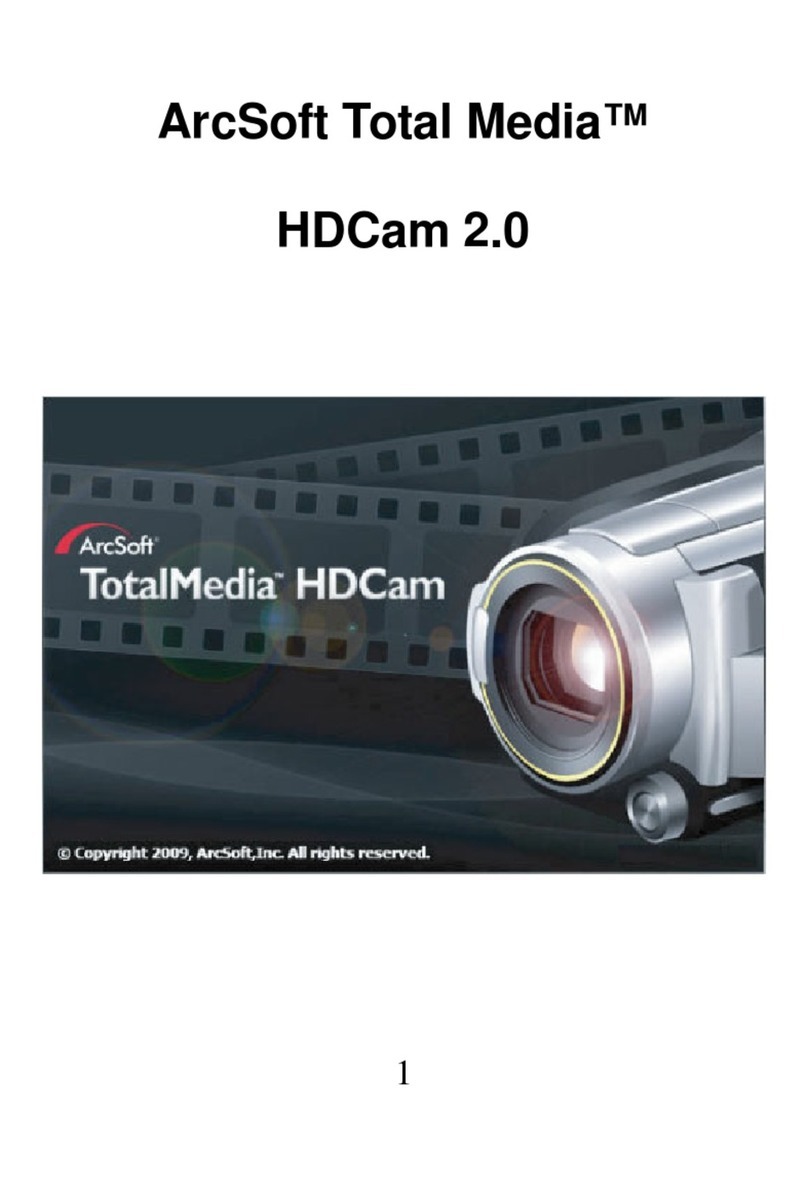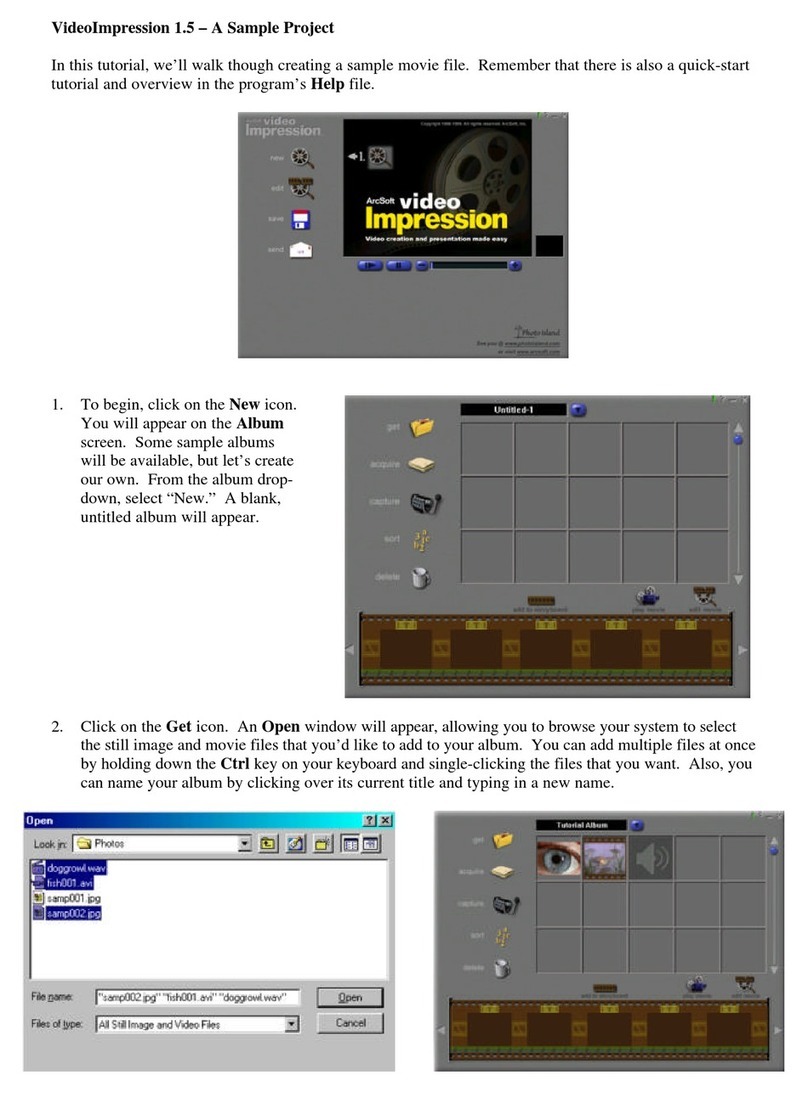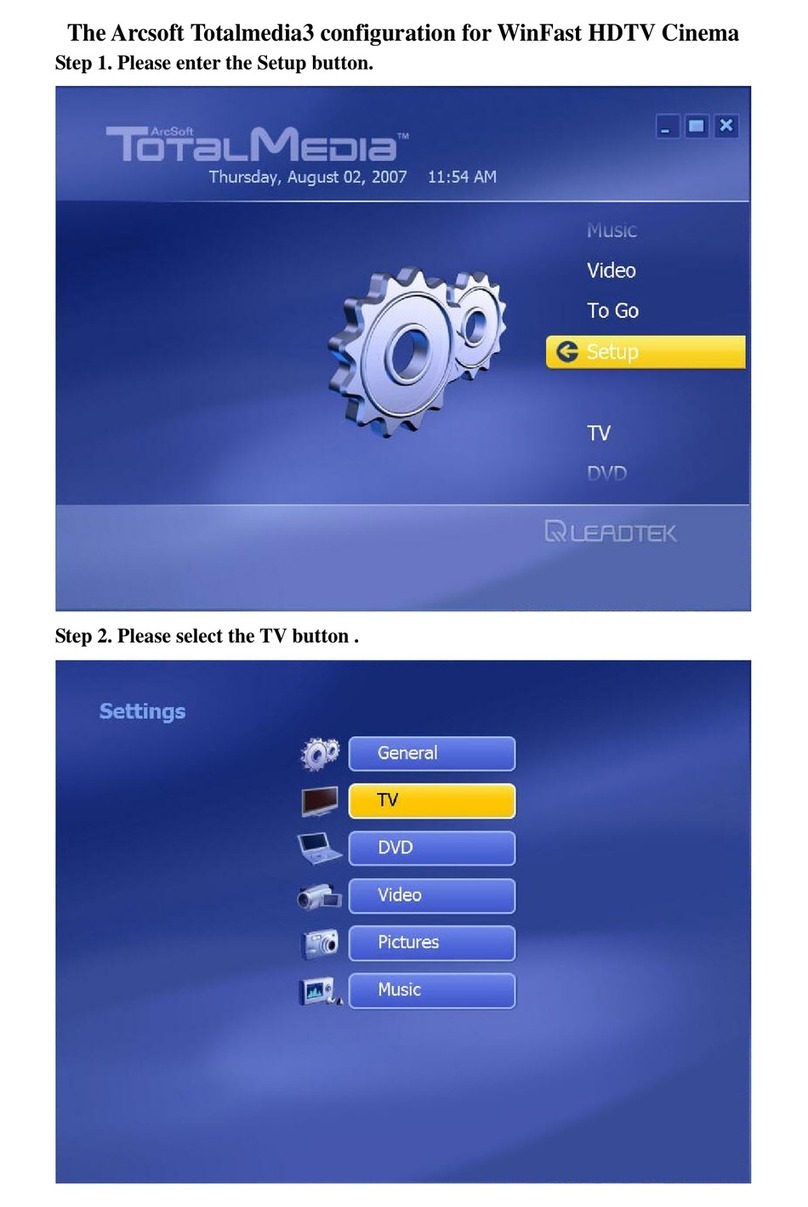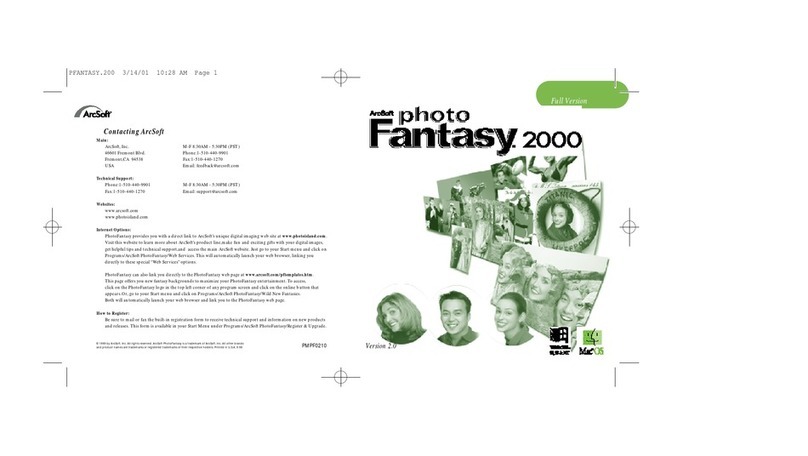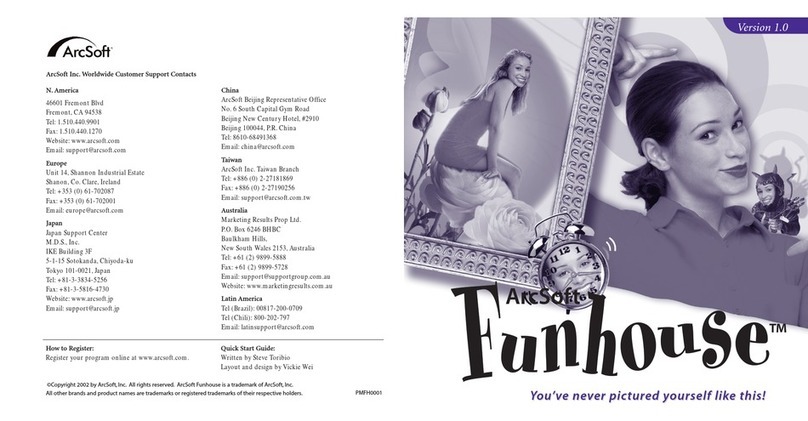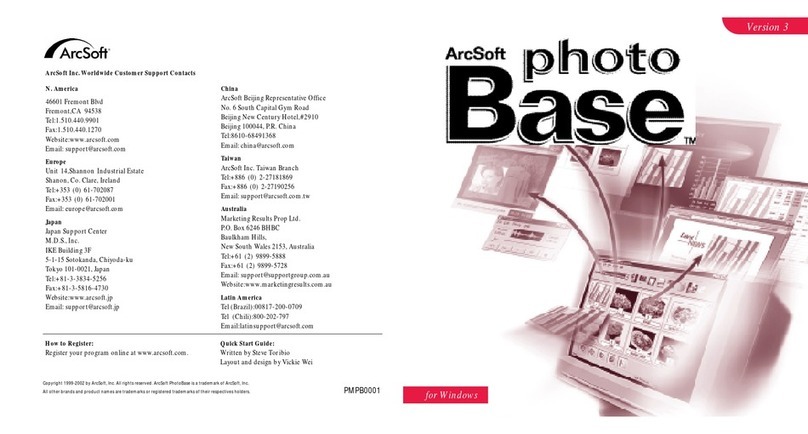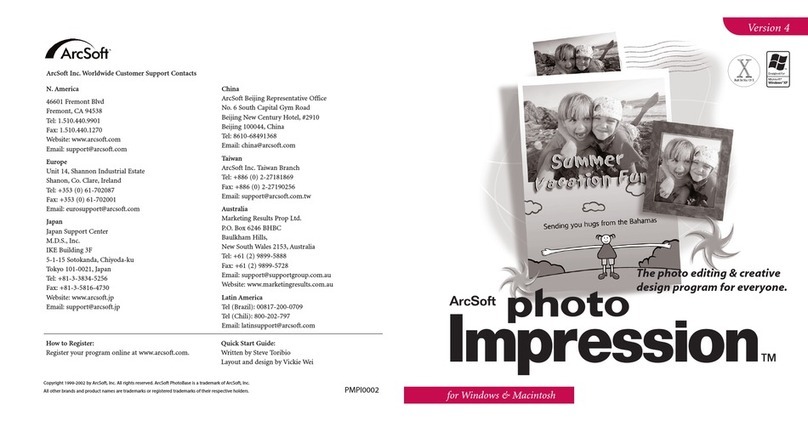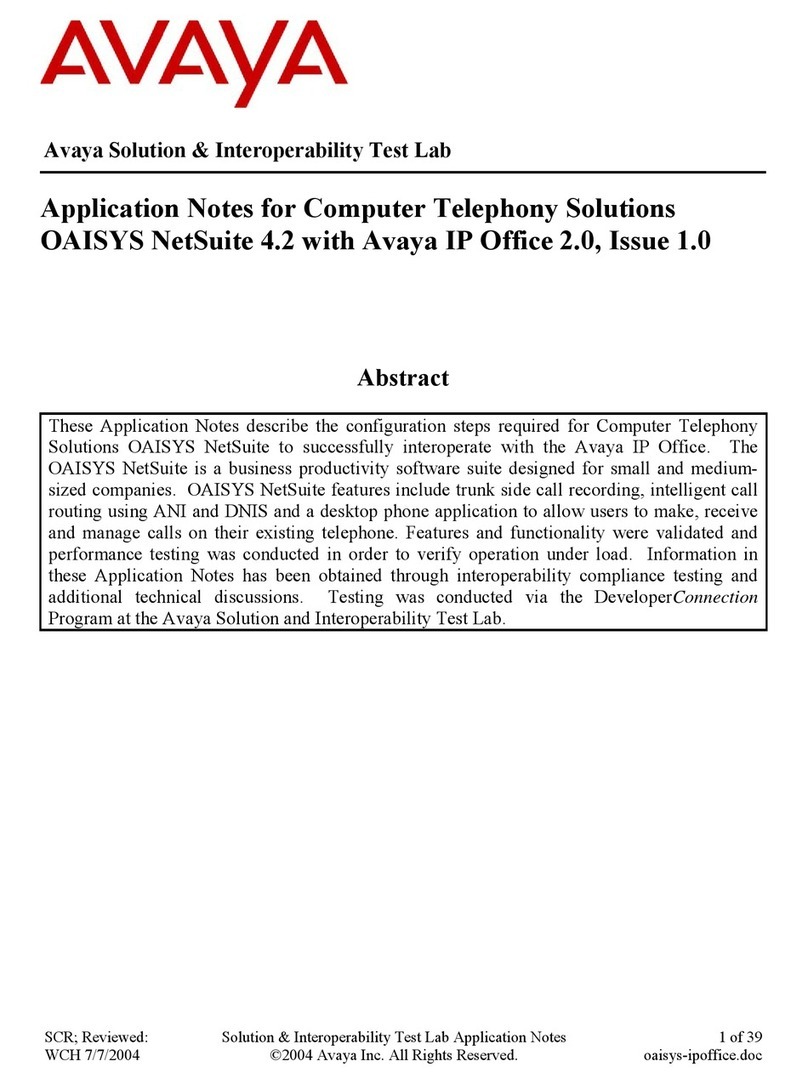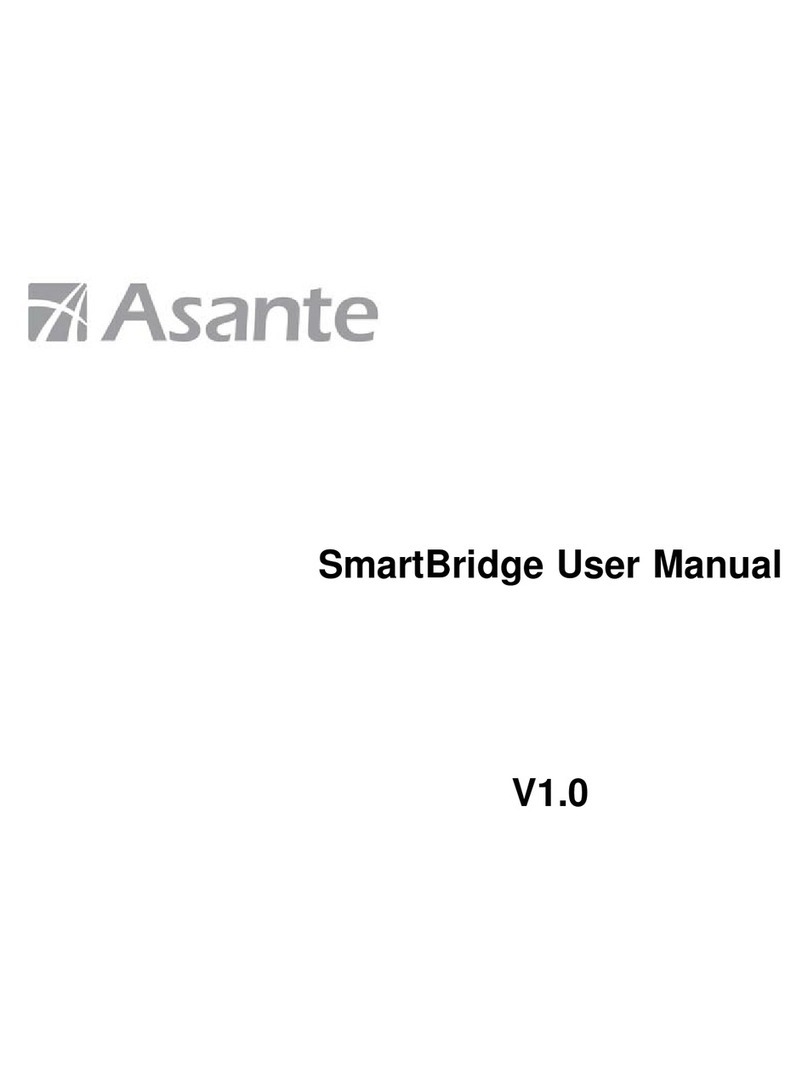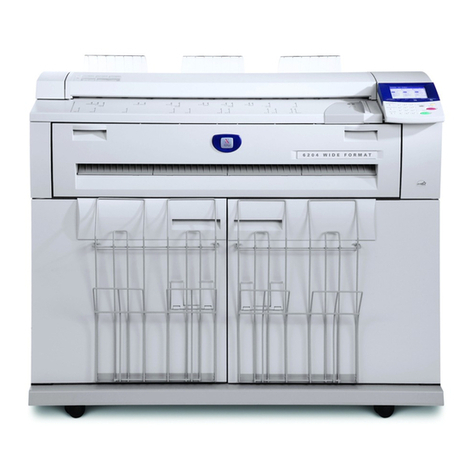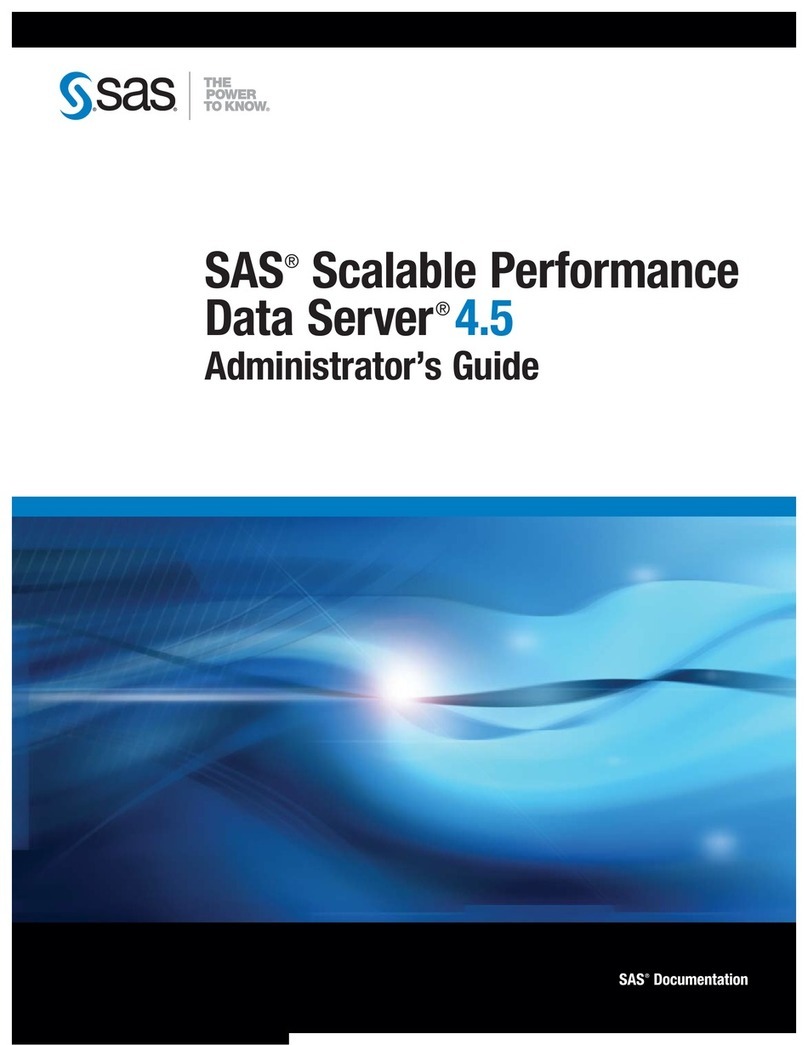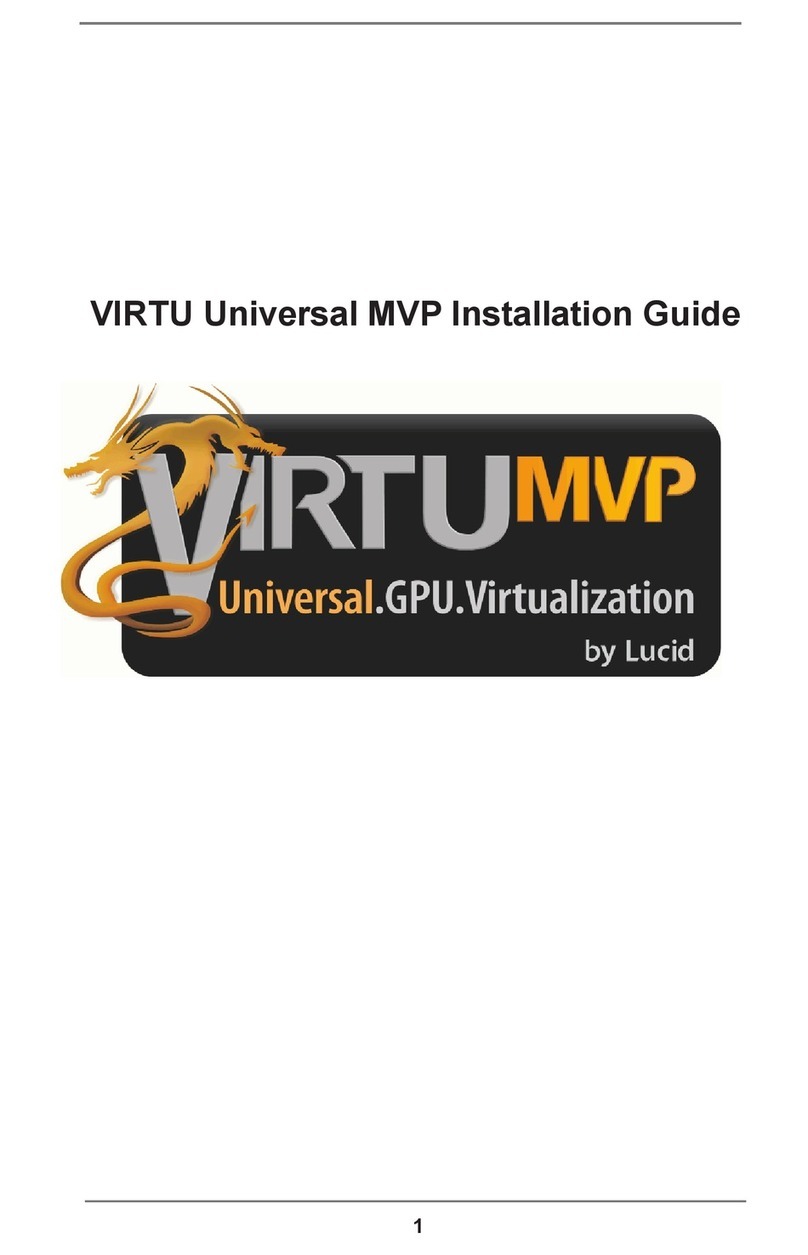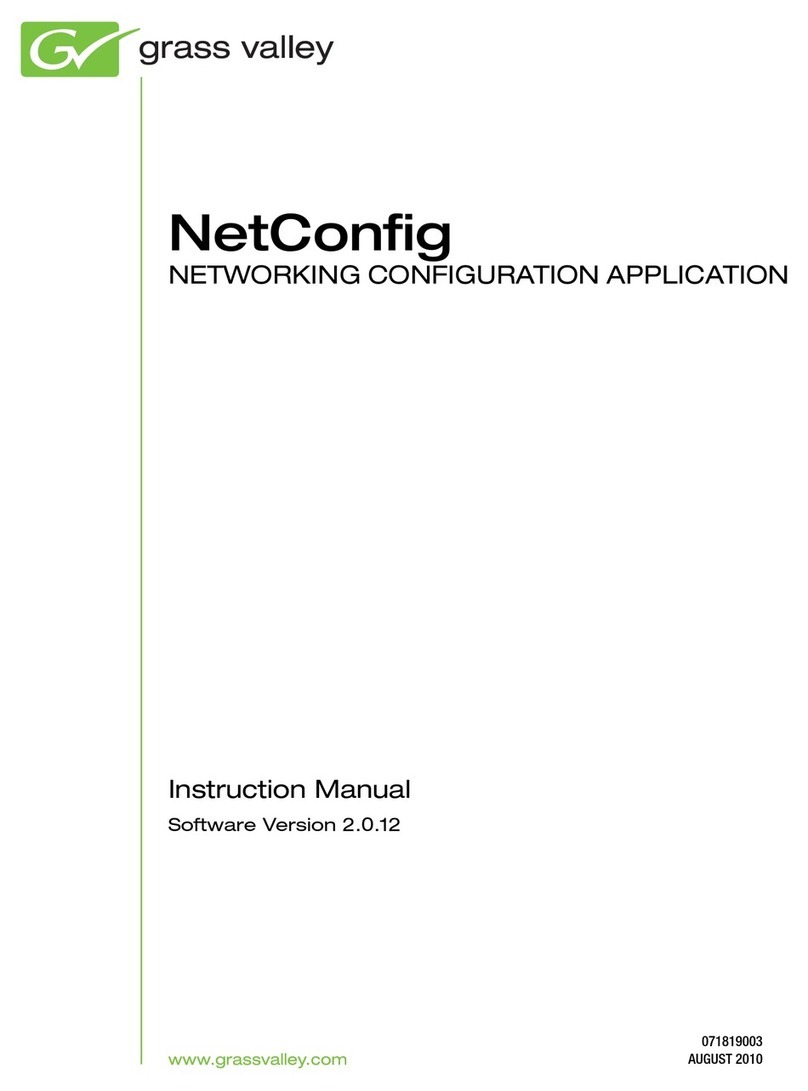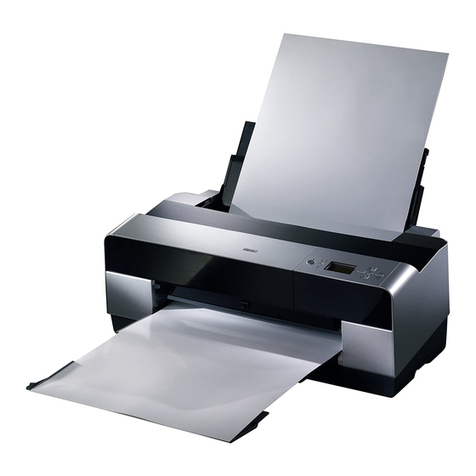Software Licensing Agreement
The following is a legal software license agreement between you, the software user, and ArcSoft, Inc.
Carefully read this licensing agreement before using the product. Using the product indicates that you
have read this license agreement and agree to its terms. If you do not agree to the terms of it, promptly
return the product package to the place where you purchased it within 10 days of the date you
acquired it for a full refund.
1. Grant of License. This license permits you to use one copy of the software included in this
package on any single computer. For each software licensee, the program can be in use on only
one computer at any given time. The software is in use when it is either loaded into RAM or
installed into the hard disk or other permanent memory. A multi-seat license permit from ArcSoft is
required if the program is going to be installed on a network server for the sole purpose of
distribution by other computers, or if the program is going to be installed on an used by more than
one computer.
2. Copyright. The software contained in this package is owned by ArcSoft and is protected by United
States copyright laws, international treaty provisions, and all other applicable national laws. The
software must be treated like all other copyrighted materials (e.g. books and musical recordings).
This license does not allow the software to be rented or leased, and the written materials
accompanying the software (if any) may not be copied.
3. Limited Warranty. ArcSoft, Inc., warrants that the software contained herein will perform
substantially in accordance with the accompanying documentation. No other warranties are
provided. ArcSoft disclaims all other warranties, either express or implied, including but not
limited to implied warranties of merchantability and fitness for a particular purpose, with respect to
the Software, the accompanying written materials, and any accompanying hardware (if any).
5. No Liability for Consequential Damages. In no event shall ArcSoft or its suppliers be liable for
any damages whatsoever (including but not limited to damages for loss of business profits, business
interruption, loss of business information, or any other pecuniary loss) which results from an
inability to use this software, even if ArcSoft, Inc. has been advised of the possibility of such
damages. Because some states/jurisdictions do not allow the exclusion or limitation of
consequential or incidental damages, the above limitations may not apply to you.
6. U.S. Government Restricted Rights. The Software and documentation are provided with
Restricted Rights. Use, duplication, or disclosure by the U.S. Government is subject to restrictions
as set forth in subparagraph ©(1)(ii) of the Rights in Technical Data and Computer Software clause
at DFARS 252.227-7013 or subparagraphs ©(1),(2), and (3) of the Commercial Computer Software
- Restricted Rights at 48 CFR 52.227-19, as applicable, and any amendments thereto. The
manufacturer is ArcSoft, Inc., 46601 Fremont Blvd., Fremont, CA 94538.
If this product was purchased in the United States, this Agreement is governed by the laws of the state
of California; otherwise, local laws may apply.
